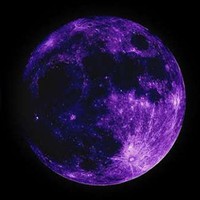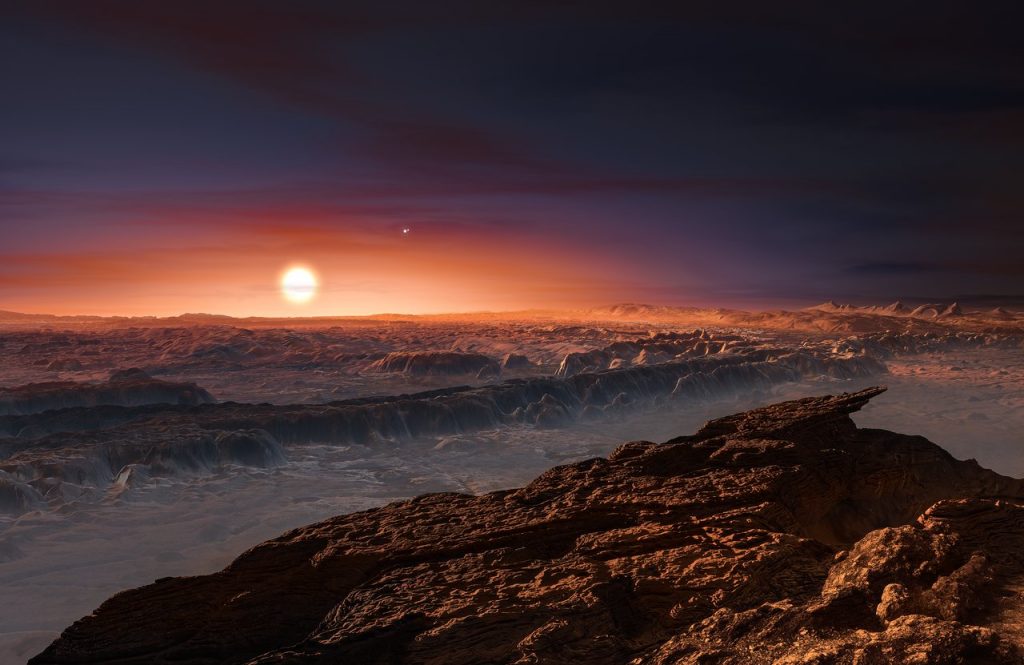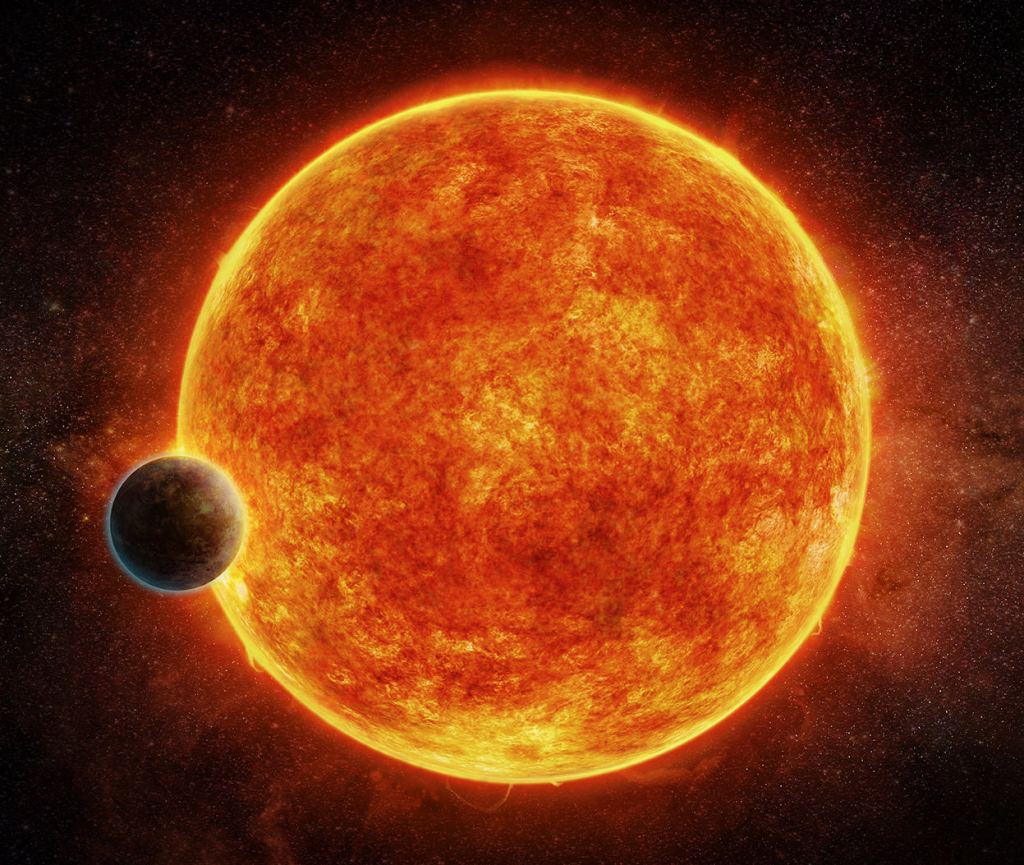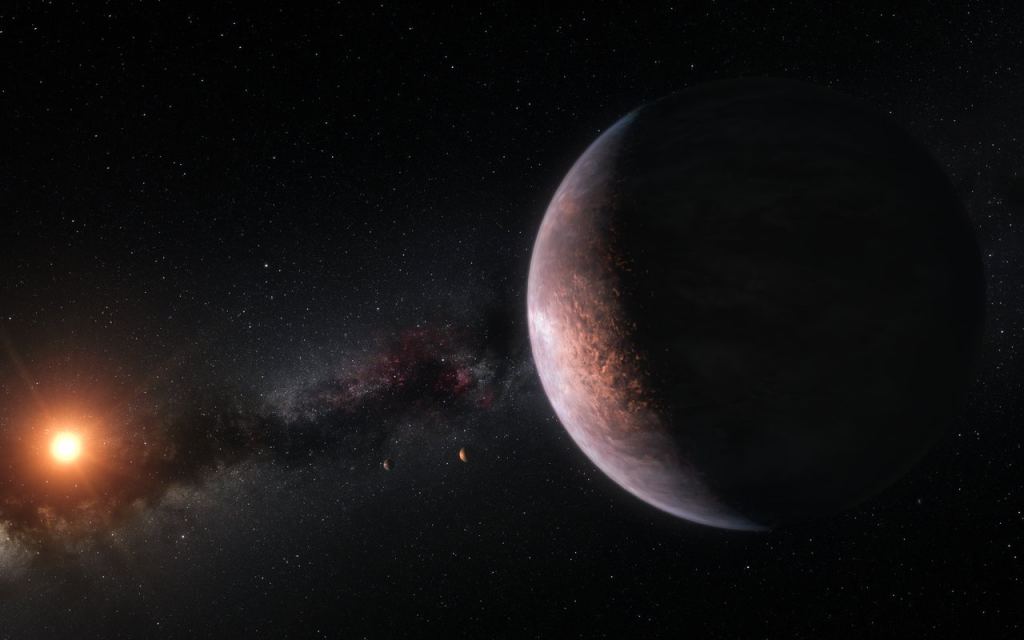Упражнение на лексическое преобразование слов. Рекомендуем всем, кто готовится к сдачи ЕГЭ по английскому языку.
Прочитайте приведённый ниже текст. Образуйте от слов, напечатанных заглавными буквами, однокоренные слова, так, чтобы они грамматически и лексически соответствовали содержанию текста.
ЗаданиеОтвет
Proxima b
A planet that could support life orbits Proxima Centauri, the closest star to the Earth.
Called Proxima b, it is ( ROCK ) like the Earth, and scientists are hopeful it has liquid water on the surface.
That is important, because, as far as we know, liquid water is absolutely essential for the ( EXIST ) of life. It doesn’t prove that there is life, but it raises the possibility.
Other planets have been found that could support life, but they orbit stars much further from the Earth. According to ( RESEARCH ), the next nearest is 13 light years away.
Proxima b is ’only’ 4.2 light years away. In astronomical terms, that is ( REASONABLE ) close, but we shouldn’t start making plans to visit Proxima b just yet!
A spacecraft would take around 70,000 years to get to Proxima b. That makes it ( POSSIBLE ) for humans to travel there in person, but radio signals would get there much faster – in 4.2 years, in fact.
It is incredible to think that ( LIVE ) beings could be standing on Próxima b now, looking up at our own distant sun in their sky and wondering what’s out there.
Proxima b
A planet that could support life orbits Proxima Centauri, the closest star to the Earth.
Called Proxima b, it is rocky like the Earth, and scientists are hopeful it has liquid water on the surface.
That is important, because, as far as we know, liquid water is absolutely essential for the existence of life. It doesn’t prove that there is life, but it raises the possibility.
Other planets have been found that could support life, but they orbit stars much further from the Earth. According to researches, the next nearest is 13 light years away.
Proxima b is ’only’ 4.2 light years away. In astronomical terms, that is reasonably close, but we shouldn’t start making plans to visit Proxima b just yet!
A spacecraft would take around 70,000 years to get to Proxima b. That makes it impossible for humans to travel there in person, but radio signals would get there much faster – in 4.2 years, in fact.
It is incredible to think that living beings could be standing on Proxima b now, looking up at our own distant sun in their sky and wondering what’s out there.
Хотелось бы узнать Ваше мнение по поводу введения обязательного единого государственного экзамена по английскому языку в 11 классе. Как Ваши ученики восприняли эту новость?
Категория:
Английский язык
10.01.2015 03:03
-75%
Курсы повышения квалификации
Организация и сопровождение олимпиадной деятельности учащихся
Продолжительность 72 часа

Английский для дошкольников и…

Электронная тетрадь по английскому…

Английский язык 3 класс ФГОС

Английский язык 9 класс ФГОС

Электронная тетрадь по английскому…

Электронная тетрадь по английскому…

Электронная тетрадь по английскому…

Электронная тетрадь по английскому…
© 2015,
Белокрыс Сауле Касеновна
178
Рекомендуем курсы ПК и ППК для учителей

Проектная деятельность учащихся
1000 руб.
4000 руб.

Повышение эффективности овладения учащимися грамматическими…
1000 руб.
4000 руб.

Теоретические и практические основания методической деятельности…
1000 руб.
4000 руб.

Система работы с высокомотивированными и одаренными учащимися по…
1000 руб.
4000 руб.

Методика обучения английскому языку как второму иностранному
1000 руб.
4000 руб.

Практическая грамматика английского языка
1000 руб.
4000 руб.
Похожие записи
-
Устная часть ЕГЭ английский язык
-
ЕГЭ английский язык устная часть
-
Как можно повысить качество обучения в условиях проведения итоговой аттестации в форме ОГЭ и ЕГЭ и использования ее материалов на уроках английского языка?
-
ЕГЭ по английскому языку: ЗА и ПРОТИВ
-
Доклад на ГМО на тему «Проблемы и перспективы преподавания иностранных языков в эпоху информационных технологий».
0 нравится
0
Нет комментариев
PDF Button
Пробный ЕГЭ 2019 по по английскому языку №1 с ответами «ЕГЭ 100 БАЛЛОВ». В конце теста содержатся ответы ко всем заданиям, а также критерии для проверки сложной, второй части теста. Единый государственный экзамен, 2019 г. АНГЛИЙСКИЙ ЯЗЫК. Тренировочный вариант №1 от 10.09.2018.
скачать
Смотрите также:
Единый Государственный Экзамен (или ЕГЭ) по английскому языку на сегодняшний день не является обязательным. Но в последнее время появляется всё больше информации о том, что, возможно, очень скоро сдавать этот экзамен обяжут всех выпускников школ. Что же представляет собой ЕГЭ по английскому, и что необходимо знать при подготовке к нему?
Данный экзамен состоит из нескольких разделов: 1. Аудирование; 2. Чтение; 3. Грамматика и лексика; 4. Письмо; 5. Говорение. Результаты оцениваются по стобалльной шкале. Минимальный балл для прохождения экзамена (или проходной балл) равен 22-м.
Первые четыре раздела объединяются в письменную часть, которую сдают в первый день экзамена. Письменная часть является обязательной. Продолжительность – сто восемьдесят минут или три часа. Максимально за выполнение письменной части можно получить восемьдесят баллов. Пятый пункт (говорение) – это устная часть экзамена. Продолжительность выполнения – пятнадцать минут. Раздел «Говорение» сдается по желанию на второй день, если выпускник хочет набрать больше 80-ти баллов.
Аудирование
Включает в себя девять заданий. В них после прослушивания аудио нужно выбрать один из трёх ответов (естественно, правильный), либо установить соответствие между услышанными и предложенными утверждениями. Каждую аудиозапись можно прослушать дважды.
Чтение
Здесь также нужно выполнить девять заданий. В 1-м задании раздела предстоит установить соответствие между текстами и предложенными заголовками. Во 2-м задании нужно заполнить пропуски в тексте предложенными фрагментами. В остальных заданиях раздела «Чтение» экзаменуемый должен ответить на 7 вопросов по содержанию еще одного текста.
Грамматика и лексика
В этом разделе 20 заданий, которые предполагают либо краткий ответ, либо выбор одного из четырех предложенных вариантов. Раздел проверяет знания по грамматике английского языка, словарный запас экзаменуемого, а также умение оперировать лексическими единицами в контексте.
Письмо
Здесь всего два задания. В одном из них необходимо написать ответ на личное письмо. Ответ должен получиться объёмом не менее ста слов. В то же время он не должен превышать сто сорок слов. В другом задании раздела потребуется написать эссе с высказыванием своего мнения по предложенной теме.
Говорение
Устная часть экзамена состоит из 4-х заданий, в которых экзаменуемому нужно будет прочитать вслух отрывок текста, составить вопросы после прочтение рекламного объявления, описать фото по заданному плану и сравнить события на двух других фотографиях.
Каждый из перечисленных пяти разделов требует заблаговременной специальной подготовки. ВНИМАНИЕ! Готовиться к ЕГЭ следует заранее (за год или даже два)! Для успешной сдачи экзамена подготовка должна осуществляться квалифицированным преподавателем. В нашей онлайн школе разработан отдельный курс «Подготовка к ЕГЭ по английскому», в рамках которого учащийся осваивает язык в формате данного экзамена. Чтобы записаться на курс, достаточно оставить заявку на прохождение бесплатного вводного урока. Мы свяжемся с Вами, запишем на пробное занятие и ответим на все интересующие вопросы.
Демонстрационные материалы письменной части 2017 г.
Демонстрационные материалы устной части 2017 г.
Демонстрационная аудиозапись 2017 г.
Онлайн тестирование по официальным демонстрационным вариантам ЕГЭ по английскому языку.
Получение результатов теста аналогичных реальным результатам на предстоящих экзаменах
Лучшие репетиторы для сдачи ЕГЭ
Составить свой тест
Вы можете составить выборочное тестирование. Укажите нужное количество заданий нажатием на кнопки + и − или напишите с клавиатуры.
По умолчанию будет составлен стандартный тест с заданиями ЕГЭ по английскому языку подобранными случайным образом.
Нажмите на «Начать тест» чтобы приступить к тестированию.
© 2016—2022
Все права защищены.
Служба поддержки портала
Упражнение на лексическое преобразование слов. Рекомендуем всем, кто готовится к сдачи ЕГЭ по английскому языку.
Прочитайте приведённый ниже текст. Образуйте от слов, напечатанных заглавными буквами, однокоренные слова, так, чтобы они грамматически и лексически соответствовали содержанию текста.
ЗаданиеОтвет
Proxima b
A planet that could support life orbits Proxima Centauri, the closest star to the Earth.
Called Proxima b, it is ( ROCK ) like the Earth, and scientists are hopeful it has liquid water on the surface.
That is important, because, as far as we know, liquid water is absolutely essential for the ( EXIST ) of life. It doesn’t prove that there is life, but it raises the possibility.
Other planets have been found that could support life, but they orbit stars much further from the Earth. According to ( RESEARCH ), the next nearest is 13 light years away.
Proxima b is ’only’ 4.2 light years away. In astronomical terms, that is ( REASONABLE ) close, but we shouldn’t start making plans to visit Proxima b just yet!
A spacecraft would take around 70,000 years to get to Proxima b. That makes it ( POSSIBLE ) for humans to travel there in person, but radio signals would get there much faster – in 4.2 years, in fact.
It is incredible to think that ( LIVE ) beings could be standing on Próxima b now, looking up at our own distant sun in their sky and wondering what’s out there.
Proxima b
A planet that could support life orbits Proxima Centauri, the closest star to the Earth.
Called Proxima b, it is rocky like the Earth, and scientists are hopeful it has liquid water on the surface.
That is important, because, as far as we know, liquid water is absolutely essential for the existence of life. It doesn’t prove that there is life, but it raises the possibility.
Other planets have been found that could support life, but they orbit stars much further from the Earth. According to researches, the next nearest is 13 light years away.
Proxima b is ’only’ 4.2 light years away. In astronomical terms, that is reasonably close, but we shouldn’t start making plans to visit Proxima b just yet!
A spacecraft would take around 70,000 years to get to Proxima b. That makes it impossible for humans to travel there in person, but radio signals would get there much faster – in 4.2 years, in fact.
It is incredible to think that living beings could be standing on Proxima b now, looking up at our own distant sun in their sky and wondering what’s out there.
Asked by: Sylvia Jast
Score: 4.9/5
(60 votes)
Even though Proxima Centauri b is in the habitable zone, the planet’s habitability has been questioned because of several potentially hazardous physical conditions. The exoplanet is close enough to its host star that it might be tidally locked.
What is the closest planet that could support life?
What is life like on Proxima b? This planet in the next star system along is, at just four light-years, by far the closest Earth-like planet we know about.
Why is Proxima B habitable?
In the habitable zone of its star, Proxima Centauri, Proxima b encounters bouts of extreme ultraviolet radiation hundreds of times greater than Earth does from the Sun. … It doesn’t take into account, for example, whether water actually exists on the planet, or whether an atmosphere could survive at that orbit.
Is the Alpha Centauri system habitable?
In this context, habitable refers to the possibility of a planet with a broadly Earth-like atmosphere to host liquid water on its surface. The nearest stellar system, α Centauri, is among the best-suited for imaging habitable-zone exoplanets (e.g., refs. 10,11,12).
Is Proxima Centauri the closest to Earth?
Proxima Centauri, the closest star to our own, is still 40,208,000,000,000 km away. … Alpha Centauri A & B are roughly 4.35 light years away from us. Proxima Centauri is slightly closer at 4.25 light years.
34 related questions found
Can we live on Proxima B?
However, NASA shared an image of a planet today that could be habitable for humanity. … Proxima b is a little more massive than the Earth and orbits in the habitable zone around Proxima Centauri, where the temperature is suitable for liquid water to exist on its surface.”
How far away is closest star?
The two main stars are Alpha Centauri A and Alpha Centauri B, which form a binary pair. They are an average of 4.3 light-years from Earth. The third star is Proxima Centauri. It is about 4.22 light-years from Earth and is the closest star other than the sun.
How long would it take to travel 4.2 light-years?
Proxima Centauri is 4.2 light-years from Earth, a distance that would take about 6,300 years to travel using current technology. Such a trip would take many generations. Indeed, most of the humans involved would never see Earth or its exoplanet counterpart.
Is there a habitable planet?
11 billion of these estimated planets may be orbiting Sun-like stars. The nearest such planet may be 12 light-years away, according to the scientists. As of June 2021, a total of 60 potentially habitable exoplanets have been found.
How long would it take to Alpha Centauri?
Alpha Centauri is 4.4 light-years away, or nearly 40 trillion kilometers. The fastest spacecraft so far launched into space, the NASA-Germany Helios probes, traveled at 250,000 kilometers per hour. At that speed, it would take the probes 18,000 years to reach the nearest star to the sun.
Can you breathe on Mars?
The atmosphere on Mars is mostly made of carbon dioxide. It is also 100 times thinner than Earth’s atmosphere, so even if it did have a similar composition to the air here, humans would be unable to breathe it to survive.
What is the next closest star to Earth?
The closest star to us is actually our very own Sun at 93,000,000 miles (150,000,000 km). The next closest star is Proxima Centauri.
Which planet is nearest to the earth?
Venus is not Earth’s closest neighbor. Calculations and simulations confirm that on average, Mercury is the nearest planet to Earth—and to every other planet in the solar system.
What planet is closest to the sun?
Mercury. Mercury—the smallest planet in our solar system and closest to the Sun—is only slightly larger than Earth’s Moon. Mercury is the fastest planet, zipping around the Sun every 88 Earth days.
How many Earth like planets are there?
As many as six billion Earth-like planets in our galaxy, according to new estimates. Summary: There may be as many as one Earth-like planet for every five Sun-like stars in the Milky Way Galaxy, according to new estimates.
Is there life on Mars?
To date, no proof of past or present life has been found on Mars. Cumulative evidence suggests that during the ancient Noachian time period, the surface environment of Mars had liquid water and may have been habitable for micro organisms, but habitable conditions do not necessarily indicate life.
Does Mars have oxygen?
Mars’ atmosphere is dominated by carbon dioxide (CO₂) at a concentration of 96%. Oxygen is only 0.13%, compared with 21% in Earth’s atmosphere. … The waste product is carbon monoxide, which is vented to the Martian atmosphere.
Can we live on Titan?
Although there is so far no evidence of life on Titan, its complex chemistry and unique environments are certain to make it a destination for continued exploration.
Can we live in Venus?
To date, no definitive proof has been found of past or present life on Venus. … With extreme surface temperatures reaching nearly 735 K (462 °C; 863 °F) and an atmospheric pressure 90 times that of Earth, the conditions on Venus make water-based life as we know it unlikely on the surface of the planet.
Will humans ever travel at the speed of light?
So will it ever be possible for us to travel at light speed? Based on our current understanding of physics and the limits of the natural world, the answer, sadly, is no. … So, light-speed travel and faster-than-light travel are physical impossibilities, especially for anything with mass, such as spacecraft and humans.
Will we ever leave our galaxy?
The technology required to travel between galaxies is far beyond humanity’s present capabilities, and currently only the subject of speculation, hypothesis, and science fiction. However, theoretically speaking, there is nothing to conclusively indicate that intergalactic travel is impossible.
How far away is Voyager 1 in light years?
The spacecraft’s next big encounter will take place in 40,000 years, when Voyager 1 comes within 1.7 light-years of the star AC +79 3888. (The star itself is roughly 17.5 light-years from Earth.)
What color is the hottest star?
White stars are hotter than red and yellow. Blue stars are the hottest stars of all. Stars are not really star-shaped. They are round like our sun.
What is the biggest star?
Although it’s difficult to pin down the exact traits of any given star, based on what we know, the largest star is UY Scuti, which is some 1,700 times as wide as the Sun.
- quynhtranghn2
- Chưa có nhóm
- Trả lời
3
- Điểm
19
- Cảm ơn
0
- Tiếng Anh
- Lớp 8
- 10 điểm
- quynhtranghn2 — 21:20:37 18/12/2019
II. Read the text below. Use the word given in capitals at the end of some of the lines to form a word that
fits in the gap in the same line.
AN INTERESTING NEW PLANET
Until recently, the (1) …………………………………… of planets outside our own solar
system was difficult to prove. Now, thanks to increasingly (2) ……………………………
equipment, hundreds have been discovered orbiting distant stars. Recent (3)
…………………………………… of the nearest star to Earth, Proxima Centauri, have led to a
(4) …………………………………… discovery: a rocky planet similar in size to the Earth which
may have liquid water on its surface.
Although the new planet is (5) …………………………………… closer to Proxima Centauri
than the Earth is to the Sun, there is still a (6) …………………………………… of life there. This
is because the star is much smaller and cooler than our sun, so conditions on the planet may
be (7) …………………………………… enough to support life. Temperatures on the planet will
be (8) …………………………………… on whether there is an atmosphere surrounding it.
Travelling to Proxima Centauri and exploring its planet is totally (9)
…………………………………… at the moment. Despite it being one of the nearest stars to the
sun, it would take thousands of years to get there using current technology.
EXIST
SENSE
INVESTIGATE
SIGNIFY
CONSIDER
POSSIBLE
COMFORT
DEPEND
REAL
- Hỏi chi tiết
Báo vi phạm
Hãy luôn nhớ cảm ơn và vote 5*
nếu câu trả lời hữu ích nhé!
TRẢ LỜI
- phuongnhiennguyen246
- Chưa có nhóm
- Trả lời
101
- Điểm
1090
- Cảm ơn
24
- phuongnhiennguyen246
- 07/05/2020
1)existence
2)sensitive
3)investigation
4)significant
5)considerably
6)possibility
7)comfortable
8)dependent
9)unreal
Hãy giúp mọi người biết câu trả lời này thế nào?
starstarstarstarstarstarstarstarstarstarstarstarstarstarstarstarstarstarstarstarstarstarstarstarstarstarstarstarstarstar
5
starstarstarstarstar
2 vote
- ptlinh2412
- Chưa có nhóm
- Trả lời
609
- Điểm
4787
- Cảm ơn
328
- ptlinh2412
- 18/12/2019
Đây là một chuyên gia, câu trả lời của người này mang tính chính xác và tin cậy cao
1. existence
2. sensitive
3. investigation
4. significant
5. considerably
6. possibility
7. comfortable
8. dependent
9. unreal
Hãy giúp mọi người biết câu trả lời này thế nào?
starstarstarstarstarstarstarstarstarstarstarstarstarstarstarstarstarstarstarstarstarstarstarstarstarstarstarstarstarstar
4
starstarstarstarstar
4 vote
In the past 20 years, astronomers have found hundreds of planets scattered across the galaxy. Some of them, like Kepler-452b, are thought to be remarkably like our Earth: similar in size and orbiting in a zone warm enough to sustain life. The thing is, most of these are impossibly far away. It takes light — the fastest thing in the universe — 1,400 years to reach Kepler-452b. We can never travel there.
That’s why today’s announcement from the European Southern Observatory and the Pale Red Dot project is so damn exciting: Astronomers have discovered a new, potentially habitable planet circling Proxima Centauri, the closest star to our own.
This is likely the nearest planet outside our solar system that we’ll ever find. What’s more, it should, in theory, be warm enough for liquid water — and warm enough for life.
«This rocky world is a little more massive than the Earth and is the closest exoplanet to us — and it may also be the closest possible abode for life outside the Solar System,» the ESO explains in its announcement of the discovery, which was published in the journal Nature.
Proxima Centauri is a smaller, cooler star than our sun. But the new planet, Proxima b, orbits about eight times closer to its star than Mercury does to the sun, the team that led the discovery said in an Reddit Ask Me Anything session. That keeps it warm in a cold solar system.
It’s about 1.3 times more massive than Earth, and it’s believed to only expose one side of its surface to the light (kind of like how on Earth we only ever see one side of the moon). A year on Proxima b is about 11.2 days long. If you were standing on Proxima b, you’d be basked in red light from the star. The Atlantic reports that if there were plant life on the planet, it would probably be crimson-colored to best absorb the rays.
Above, you can see just how close Proxima b is to its star, in the narrow band of green that represents the area where life could, hypothetically, live.
The discovery is the culmination of years of observations by a group of scientists under the banner of the «Pale Red Dot» initiative. («Pale red dot» is a nickname for Proxima Centauri.) Basically, astronomers pointed telescopes at Proxima Centauri and were searching for signs a planet was influencing the quality of light emanating from the star. From those changes in light, they can then calculate basic features of the planet, such as its size and orbit.
There are some reasons to be doubtful that Proxima B could sustain life
Proxima b is at the right distance and temperature to support life, but other hazards may lurk that could make life impossible. For example, orbiting so close to a star could expose the planet to deadly levels of radiation. «Despite the temperate orbit of Proxima b, the conditions on the surface may be strongly affected by the ultraviolet and X-ray flares from the star — far more intense than the Earth experiences from the Sun,» ESO explains.
«Life on such a planet would probably have to shelter underground or under water if it exists,» Lisa Kaltenegger, director of Cornell University’s Carl Sagan Institute, says in an email press statement. (She was not involved with the discovery.) «Or develop a method to shelter from the flares and its temporary high UV radiation.»
Could we ever get there? Maybe!
At 4.2 light-years away, Proxima b is still incredibly distant. The rocket that took men to the moon reached a speed of 24,500 miles per hour. At that speed, it would take more than 130,000 years to reach Proxima b. Humanity itself might not last that long.
But there may be a way to send something there.
In April, Russian billionaire Yuri Milner and super-famous physicist Stephen Hawking announced they had an idea to send teeny, tiny spaceships to Alpha Centauri, the next closest star after Proxima.
They call their initiative the Breakthrough Starshot, and it involves propelling space vessels the size of postage stamps to 100 million miles per hour — 20 percent of the speed of light.
Breakthrough Starshot
At that speed, one of these «nanocrafts» could reach Alpha or Proxima Centauri in about 20 years. And because radio communications travel at the speed of light, it would only take an additional four years or so for the data from the mission to reach Earth.
Hawking and Milner think it’s possible to design such tiny spaceships because of Moore’s law, which dictates that microchips will keep getting smaller and more powerful. «This creates the possibility of a gram-scale wafer, carrying cameras, photon thrusters, power supply, navigation and communication equipment, and constituting a fully functional space probe,» the Breakthrough Starshot website explains.
This work is all preliminary. There are a lot of problems Starshot will have to figure out before it can get off the ground. Here’s one, described in Ars Technica today: At speeds of 20 percent the speed of light, it’s possible the spacecraft could be destroyed by a single atom.
But here’s the thing: It’s at least in the realm of possibility — thanks to human ingenuity and imagination — to travel to this strange new world. And that’s exciting.
The 116 images NASA wants aliens to see
$95/year
$120/year
$250/year
Other
Yes, I’ll give $120/year
Yes, I’ll give $120/year
We accept credit card, Apple Pay, and
Google Pay. You can also contribute via
Прочитайте
текст и заполните пропуски A–F частями предложений, обозначенными цифрами 1–7. Одна
из частей в списке 1–7 лишняя. Занесите цифры, обозначающие соответствующие
части предложений, в таблицу.
The discovery of three planets
In 1781, William Herschel, viewing the sky, recognized that
an object in the constellation of Gemini was moving against the background of
stars. At first, he thought he was looking at a new comet, but upon further
investigation realized A _____________________.
Herschel named his discovery ‘the Georgian planet’ after
his patron,
George III. Other names proposed included Herschel and Uranus. Eventually
Uranus became the universally accepted name. Uranus is similar in composition
to Neptune, and both B _____________________ larger gas giants Jupiter
and Saturn.
In the 19th century it became evident that the orbit of
Uranus did not follow Newton’s law of Gravitation. Many astronomers began to
question whether Newton’s theory applied to an object so far from the sun.
However, two astronomers, John Couch Adams in England and Urbain Le Verrier in
France, both independently came up with the theory C _____________________ by a more distant planet.
Working to Le Verrier’s calculations, astronomers at the
Berlin Observatory D _____________________. They had discovered the
eighth planet of the solar system, Neptune. It was observed on 23 September
1846 by Johann Galle, and its largest moon, Triton, was discovered shortly
thereafter, though none E _____________________
telescopically until the 20th century.
After the discovery of Neptune, astronomers F _____________________ the solar system for a ninth planet.
In 1930, an American astronomer discovered the last of the known worlds of our
solar system, Pluto.
| 1. |
of them realized |
| 2. |
were able to identify this planet |
| 3. |
that he was looking at a new planet |
| 4. |
that the orbit of Uranus had been disturbed |
| 5. |
started to look further into the depths of |
| 6. |
are of different chemical composition than the |
| 7. |
of the planet’s remaining 12 moons were located |
In August of 2016, astronomers from the European Southern Observatory (ESO) announced the discovery of an exoplanet in the neighboring system of Proxima Centauri. The news was greeted with consider excitement, as this was the closest rocky planet to our Solar System that also orbited within its star’s habitable zone. Since then, multiple studies have been conducted to determine if this planet could actually support life.
Unfortunately, most of the research so far has indicated that the likelihood of habitability are not good. Between Proxima Centauri’s variability and the planet being tidally-locked with its star, life would have a hard time surviving there. However, using lifeforms from early Earth as an example, a new study conducted by researchers from the Carl Sagan Institute (CSI) has shows how life could have a fighting chance on Proxima b after all.
The study, which recently appeared in the Monthly Notices of the Royal Astronomical Society, was conducted by Jack O’Malley-James and Lisa Kaltenegger – an research associate and the director of the Carl Sagan Institute at Cornell University. Together, they examined the levels of surface UV flux that planets orbiting M-type (red dwarf) stars would experience and compared that to conditions on primordial Earth.
The potential habitability of red dwarf systems is something scientists have been debated for decades. On the one hand, they have a number of attributes that are encouraging, not the least of which is their commonality. Essentially, red dwarfs are the most common type of star in the Universe, accounting for 85% of the stars in the Milky Way alone.
They also have the greatest longevity, with lifespans that can last into the trillions of years. Last, but not least, they appear to be the most likely stars to host systems of rocky planets. This is attested to by the sheer number of rocky planets discovered around neighboring red dwarf stars in recent years – such as Proxima b, Ross 128b, LHS 1140b, Gliese 667Cc, GJ 536, the seven rocky planets orbiting TRAPPIST-1.
However, red dwarf stars also present a lot of impediments to habitability, not the least of which is their variable and unstable nature. As O’Malley-James explained to Universe Today via email:
“The chief barrier to the habitability of these worlds is the activity of their host stars. Regular stellar flares can bathe these planets in high levels of biologically harmful radiation. Furthermore, over longer periods of time, the onslaught of X-ray radiation and charged particle fluxes from the host stars places the atmospheres of these planets at risk of being stripped away over time if a planet cannot replenish its atmosphere fast enough.”
For generations, scientists have struggled with questions regarding the habitability of planets that orbit red dwarf stars. Unlike our Sun, these low-mass, ultra-cool dwarf stars are variable, unstable and prone to flare-ups. These flares release a lot of high-energy UV radiation, which is harmful to life as we know it and capable of stripping a planet’s atmospheres away.
This places significant limitations on the ability of any planet orbiting a red dwarf star to give rise to life or remain habitable for long. However, as previous studies have shown, much of this depends on the density and composition of the planets’ atmospheres, not to mention whether or not the planet has a magnetic field.
To determine if life could endure under these conditions, O’Malley-James and Kaltenegger considered what conditions were like on planet Earth roughly 4 billion years ago. At that time, Earth’s surface was hostile to life as we know it today. In addition to volcanic activity and a toxic atmosphere, the landscape was bombarded by UV radiation in a way that is similar to what planets that orbit M-type stars experience today.
To address this, Kaltenegger and O’Malley-James modeled the surface UV environments of four nearby “potentially habitable” exoplanets – Proxima-b, TRAPPIST-1e, Ross-128b and LHS-1140b – with various atmospheric compositions. These ranged from ones similar to present-day Earth to those with “eroded” or “anoxic” atmospheres – i.e. those that don’t block UV radiation well and don’t have a protective ozone layer.
These models showed that as atmospheres become thinner and ozone levels decrease, more high-energy UV radiation is able to reach the ground. But when they compared the models to what was present on Earth, roughly 4 billion years ago, the results proved interesting. As O’Malley-James said:
“The unsurprising result was that the levels of surface UV radiation were higher than we experience on Earth today. However, the interesting result was that the UV levels, even for the planets around the most active stars, were all lower than the Earth experienced in its youth. We know the young Earth supported life, so the case for life on planets in M star systems may not be quite so dire after all.”
What this means, in essence, is that life could exist on neighboring planets like Proxima b right now despite being subjected to harsh levels of radiation. If you consider the age of Proxima Centauri – 4.853 billion years, which is roughly 200 million years older than our Sun – the case for potential habitability may become even more intriguing.
The current scientific consensus is that the first lifeforms on Earth emerged a billion years after the planet formed (ca. 3.5 billion years ago). Assuming Proxima b formed from a protoplanetary debris disk shortly after Proxima Centauri was born, life would have had enough time to not only emerge, but get a significant foothold.
While that life may consist solely of single-celled organisms, it is encouraging nonetheless. Aside from letting us know that there could very well be life beyond our Solar System, and on nearby planets, it provides scientists with constraints on what type of biosignatures may be discernible when studying them. As O’Malley-James concluded:
“The results from this study builds the case for focusing on life on Earth a few billion years ago; a world of single-celled microbes – prokaryotes – that lived with high UV radiation levels. This ancient biosphere may have the best overlaps with conditions on habitable planets around active M stars, so could provide us with the best clues in our search for life in these star systems.”
As always, the search for life in the cosmos begins with the study of Earth, since it is the only example we have of a habitable planet. It is therefore important to understand how (i.e. under what conditions) life was able to survive, thrive and respond to environmental changes throughout Earth’s geological history.
For while we may know of only one planet that supports life, that life has been remarkably diverse and has changed drastically over time.
Be sure to check out this video about these latest findings, courtesy of the CSI and Cornell University:
Further Reading: Cornell Chronicle, MNRAS









:no_upscale()/cdn.vox-cdn.com/uploads/chorus_asset/file/6988971/eso1629b.jpg)
:no_upscale()/cdn.vox-cdn.com/uploads/chorus_asset/file/6989049/CqpIWdaW8AA7Qcr.jpg)





